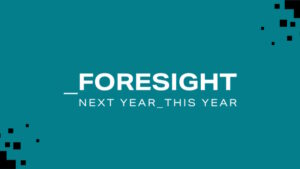How can brands ensure their efforts to reduce their environmental impacts are regarded as genuine and authentic, rather than simply ‘greenwashing’? What can marketers do to ensure that they have a complete picture of their carbon footprint and full transparency in their attempts to ‘offset’ it?
New Digital Age recently hosted a panel session in London exploring these issues and more. NDA’s editor Justin Pearse chaired the ‘Pretty Green Lies’ session – and was joined by Amy Williams, CEO and founder of global ad tech for good platform Good-Loop (NDA’s partner for the event); Shakaila Forbes-Bell, consumer motivation expert and author of ‘Fashion is Psychology’; and Harvin Gupta, Head of Commercial Partnerships at Scope3, a company that helps advertisers measure the carbon emissions created by their digital ad supply chains.
Consumer psychologist Forbes-Bell discussed why shoppers are increasingly looking to make more environmentally-sound purchases: “Consumers want to feel good when they make a purchase from a brand that claims ‘green’ credentials. They want the dopamine high that comes from feeling that they’ve made a positive impact. The difficulty arises for brands when consumers begin to feel there’s a disconnect between a brand’s claims and reality.”
Brands can overcome this cognitive dissonance by being more transparent with consumers, argues Forbes-Bell. In fact, this level of transparency and brand responsibility should extend far beyond green issues and cover the brand-consumer relationship in its entirety.
She explained: “Brands have a lot of data on their consumers. They know what consumers are buying, how often they’re doing it, how much they are spending, and so on. Brands need to use that data to give power back to consumers. By showing them what their consumption patterns are, you give them the opportunity to make positive behavioural changes. For example, issues like shopping addiction, which is estimated to affect up to 16% of the UK population, need to be taken more seriously. Brands need to absorb some of the responsibility for that,” said Forbes-Bell.
“As marketers, we’re encouraging consumers to act on impulse, without thinking about the ramifications, personally or globally.”
Digital advertising: the great polluter?
The digital advertising industry is waking up to the massive scale of its own carbon footprint, which far exceeds that of the global airline industry.
Gupta, of emissions consultancy Scope3, set the scene for attendees. He said: “One ad impression generates, on average, one gramme of carbon. So a million ad impressions is one metric tonne of carbon, roughly the same as a return flight from London to Boston and back. As everyone here knows, in this industry, a million ad impressions is nothing. So that gives you an idea as to the scale of the problem.”
Gupta explained how a company’s carbon emissions can be broken down into three main categories: Scope 1 emissions are the greenhouse gas emissions that a company makes directly, e.g. running its boiler or its cars; Scope 2 refers to the emissions it makes indirectly, such as emissions associated with the electricity or energy being produced on its behalf; Scope 3 emissions include everything that the company is indirectly responsible for across its complete supply chain and the total life cycle of its products.
Gupta said: “In most companies, 80% of their emissions fall into the Scope 3 category. Up until recently, most efforts to calculate a company’s carbon footprint have concentrated on Scope 1 and Scope 2 emissions, which doesn’t get us where we need to go. Modern supply chains are complex webs. If we want to actually have an impact, we need to be measuring and reducing Scope 3 emissions.”
Scope3 and Good-Loop recently announced a new partnership that enables digital marketers to measure, offset and reduce the entire, end-to-end carbon footprint of their programmatic advertising. The collaboration brings together Good-Loop’s existing green media technology, which tracks and offsets the CO2 generated by specific ad campaigns, with Scope3’s supply chain emissions data, which delivers end-to-end emissions accounting of every programmatic ad transaction.
“What you can measure, you can change,” said Williams of Good-Loop. “In recent times, we’ve had clients test the impact of things like using HTML tags versus raw video files, or running ads at 4pm (when more renewable energy is being used) rather than 8pm, or targeting different devices and publishers. All these metrics can be contained within a single dashboard and used to make more informed, more sustainable planning decisions.”









